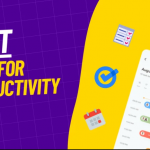Progressive Web Apps (PWAs) are transforming mobile experiences by blending the best aspects of web and native apps. With users demanding faster and more reliable interactions, PWAs offer seamless access without the need for app store downloads.
1. What Are Progressive Web Apps?
PWA are web applications that work on any platform with a compatible browser. They utilize modern web capabilities, such as service workers and push notifications, to provide users with an app-like experience directly from their browser. This accessibility reduces barriers often associated with traditional mobile app installations.
2. Advantages of Progressive Web Apps
Progressive Web Apps are becoming popular for several reasons:
- Instant Access: PWAs open directly in a browser, which saves storage space and avoids lengthy downloads.
- Offline Functionality: Service workers enable offline access, making PWAs reliable even in areas with limited connectivity.
- Improved Performance: PWAs load quickly on slow networks, delivering a smooth experience that keeps users engaged.
3. How PWA Are Shaping Mobile Commerce
PWA are making a big impact on mobile commerce. For e-commerce businesses, PWAs offer a fast and interactive shopping experience without requiring app installations. Many brands are using PWAs to boost customer engagement and increase conversion rates, recognizing that quick, reliable browsing keeps users returning.
4. The Future of PWA
As more platforms support PWA, their potential will grow. Future advancements may add features like biometric authentication and enhanced camera access, bridging the gap between web and mobile.
Conclusion
PWA promise a faster, more accessible mobile web experience. For more on how PWAs are transforming mobile, visit Bedots.
Read more: Top 10 Must-Have Productivity Apps for Busy Professionals



